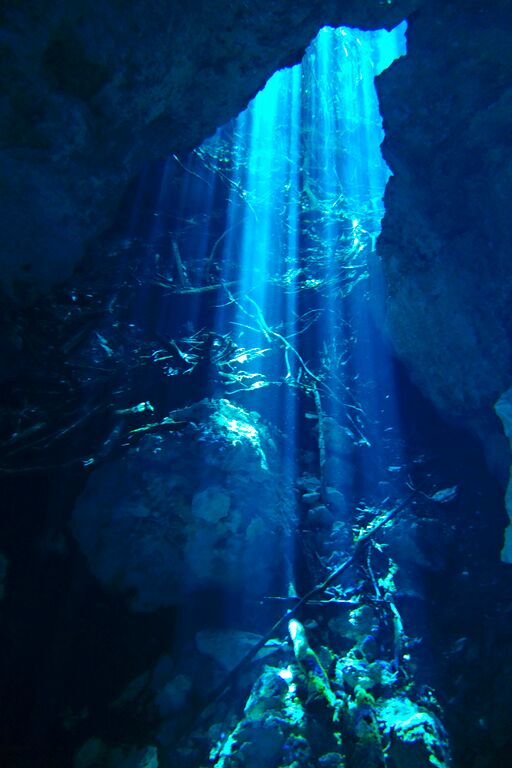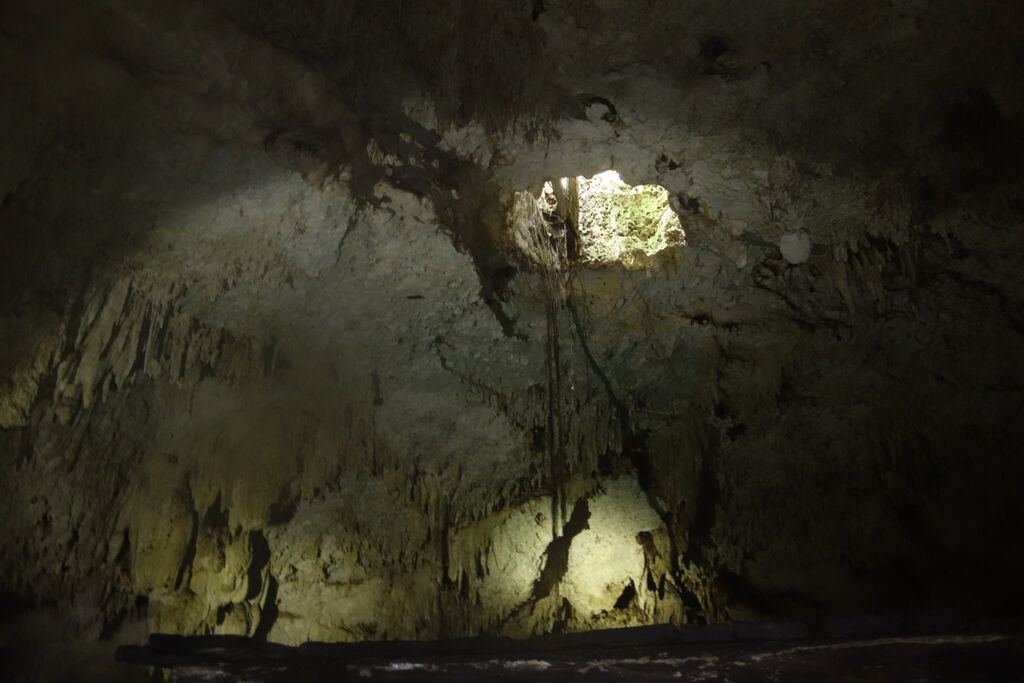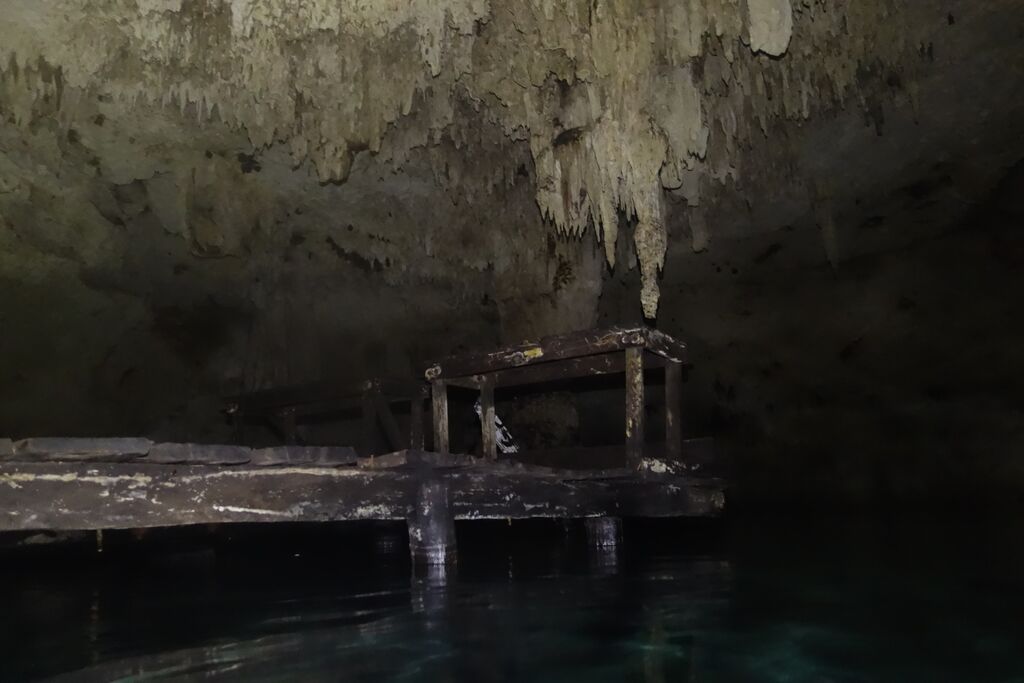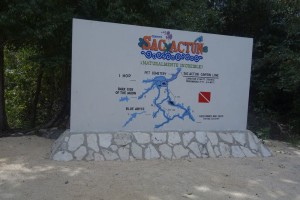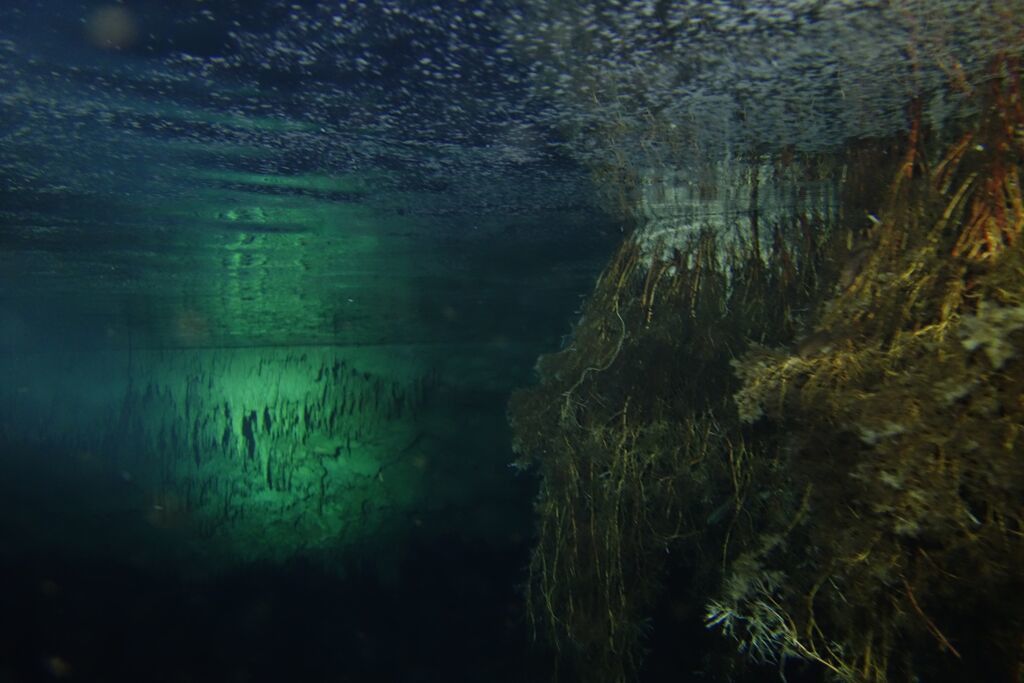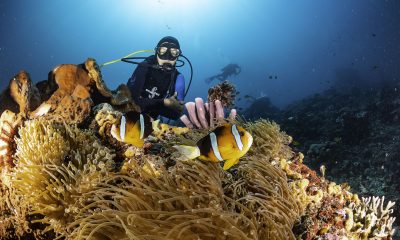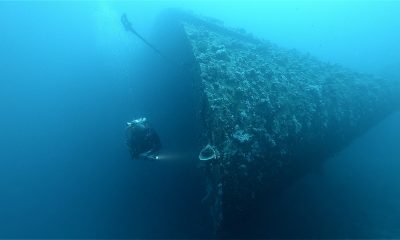News
Mayan Magic: Cavern Diving in Mexico’s Yucatan Peninsula
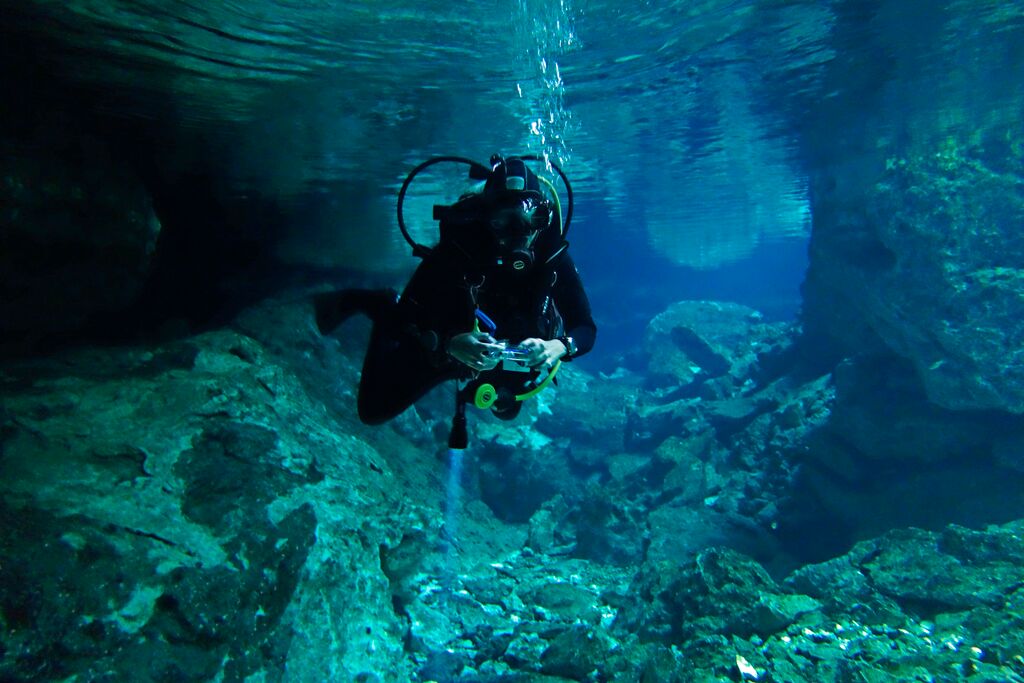
Southern Mexico’s Yucatan peninsula is the ancestral home of the Maya people whose ancient cities and monolithic temples can be found everywhere from Cancun in the North to Honduras 800 miles to the South.
The region consists of a gigantic limestone cap riddled with hundreds of subterranean rivers which over the millennia have carved out beautiful caves and passages on their way to the sea.
Over time some cave roofs have collapsed revealing open bodies of water called Cenotes which the Maya believed were gateways to the underworld and the home of their Gods.
Today they allow adventurous divers access to a magical flooded world where they can marvel at intricate limestone formations and dazzling light shows.
In February 2015 a group of fourteen current and former members of Southsea SAC (BSAC 009) set off to discover what makes the caverns of the Yucatan such a special place to dive.
As we were all experienced divers, our aim was to enjoy a “Rolls –Royce” tour of the area’s subterranean dive sites under the expert guidance of professional cave guides Lanny and Claire Vogel of Underworld Tulum, packing in as much diversity, quality and adventure as possible.
Day 1: Car Wash & Gran Cenote
Feeling our way
Having been met by Lanny and Budgie (yes, the same Budgie who skippered Top Gun out of Portland back in the day) we drove to Underworld Tulum’s base to be briefed on cavern diving protocols, divided into teams and acquainted with our cavern diving kit.
I was part of “Team Claire” led by cave diving expert Claire Vogel.
Our first Cenote dive would be at “The Car Wash”, so called because local taxi drivers used to wash their vehicles in the cenote’s clean, fresh water.
Being Cavern diving novices we began with a check out dive in a relatively open and unbreakable training area within the site, where we could safely practice basic cavern diving techniques and hone our trim and buoyancy skills before venturing underground.
Exercises successfully completed, an excited if slightly nervous “Team Claire” began its descent into the Cenote’s gaping maw to reach its hidden caverns.
Once inside the cavern system however, all apprehension vanished as we entered a magical realm straight out of Lord of the Rings and marvelled at the spectacular formations dripping water had created during the centuries these caves had been “dry”.
After 15 minutes underground we reached our turn around point and it was time to return to the light and the world of man.
With the opening dive successfully completed we re-loaded the trucks and headed to our next site, Gran Cenote.
This dive provided more opportunities to refine our Cavern diving skills as the route was a bit longer, with slightly narrower passages and less natural light, though we did plan to surface in a large air dome complete with resident bat population to check we were all happy before continuing on.
After spending time watching the bats scoot about in the torch light, it was time to push on and complete our dive as another team came in to enjoy the show.
Day 2: Dos Ojos
Good buoyancy required
The Dos Ojos site consists of two flooded tunnels which meet in a Cenote to form an underwater letter “Y”. When entering the system, the left passage takes you to “Bat Cave” whilst the right goes to the “Barbie Line”.
For our first dive, Claire led us into the right hand passage and onto the “Barbie Line” before continuing around the line’s circular route back to the entrance. As the line twisted its way through the cavern past spectacular rock formations, sometimes there was less than 3m of water between the roof and the fine powdery sand below making BSAC gold standard buoyancy essential to avoid dangerous silt outs.
On our second dive, we followed the left hand line into the Bat Cave cavern where conditions were even more challenging with only an average depth of 3.3m to play with. After finning through dimly lit passages for what seemed like an eternity, we emerged into a large domed cave with a small opening in the roof through which the sunshine streamed.
Under the hole was a large diving platform rising from the water on stilts. This had been built as a dive base by the early cave explorers who’d lower themselves and their kit into the cave using ropes dropped through the hole in the cave roof; real Indiana Jones stuff!
Day 3: Angelita and Tajma-Ha
Two signature sites
Angelita Cenote had long been on our cenote “bucket list” as not only is the site located in a beautiful setting, it’s also technically very demanding. Shaped like a tooth, the “crown” forms a large open water area whilst the “roots” slope down either side of a central mound to well over 50m.
An unusual feature of this site is the thick green layer of Hydrogen Sulfide-rich water permanently trapped between the fresh water above and the salt water below.
From above the layer looks like solid ground, from which the skeletal remains of trees submerged hundreds if not thousands of years ago emerge as if through a green mist.
Descending through the Sulfide layer to the dark waters beneath, we gazed at the drowned trees before returning to the light and making our way slowly back to the surface.
In the early days of cavern exploration, divers flying over the dense jungle looking for open water would drop streamers into the trees to mark any promising sites before walking in with all their gear to explore whatever they had found. Tajma-Ha was one of the many spectacular sites discovered in this way.
Billed as one of the most beautiful cavern systems in the area, our dive would take us on a circular route past two different Cenotes before returning us to the entrance/exit point.
We followed the guide line clockwise, skirting the Puntos de Luz air dome before moving onto the beautiful Sugar Bowl Cenote.
There we paused for a moment’s reflection on the sights we had seen before continuing on and back to our start point through more spectacular rock formations.
Day 4: The Pit & Pet Cemetery
The longest cave system in the world
Located 6 miles from the nearest tarmac road in what was once dense jungle, The Pit was accidently discovered in 1985 by the Mexican Army who were conducting an aerial assessment of damage caused to the area by Hurricane Elena. Now known to be connected to the Dos Ojos system, it forms part of the third longest underwater cave system in the world (52 miles).
The site itself looks like a goatskin water bottle. A relatively narrow entrance leads divers into a large flooded cavern whose rock strewn floor lies some 40m below.
Staying close to the remaining cavern roof the route initially meandered its way around a large undercut passing beautiful stalagmites before spiralling downwards towards the bottom. At 28m there’s a white Hydrogen Sulfide layer through which a rubble hill protrudes like an underwater island. Approaching the end of our allotted bottom time we began our ascent, riding the shafts of sunlight as they slowly carried us up to the surface.
Pet Cemetery, despite its rather macabre name, was one of the best sites we dived all trip.
Part of the longest system of underwater caves on earth (207 miles), we would dive the Sac Actun (Mystic River) cavern line route.
Running for 750 meters at an average depth of 4m, this dive was the longest and most technically demanding we had so far attempted.
Entering the system at roughly the line’s mid-point, we followed it in a loop, thoroughly enjoying the amazing rock formations and visiting a spectacular air dome before returning home.
Day 5: Dream Gate
An amazing two for one
Located two miles from the Dos Ojos system, Dream Gate has an upstream and a downstream circuit providing divers with two great dives at one amazing location.
We split into two teams to tackle the upstream line travelling in opposite directions to minimise traffic through the narrower parts of the route.
The average depth was around 4m with the line skirting rows of limestone columns lined up like the bars of an old fashioned jail.
After about 15 minutes we surfaced in a small air dome, home to a colony of rare Mini Bats indigenous to this region. This was a very strange place. Vines climbed the cave’s stone columns towards the light creating an underground forest in which limestone pillars took the place of trees.
Our second dive was in the downstream cavern. Here there were many more columns, stalactites and stalagmites to navigate around than in the upstream section.
Sometimes the columns were so tightly packed they formed lattice like screens providing tantalising glimpses of potentially unexplored routes to tempt the unwary explorer from the true path.
Is this for you?
Diving Yucatan’s Cenotes is undoubtedly an amazing experience and definitely not one to be missed. Cavern diving presents divers with some extra challenges however; in particular they should be trained and practiced in the techniques commonly used when diving in dimly lit, overhead environments and be able to consistently deliver excellent buoyancy control throughout their dives. If that’s you though, go for it, you won’t regret it!
Essentials
When to go:
January to March is Yucatan’s least humid period with average daytime temperatures a balmy 25°C. In the caverns the water temperature averaged 24°C, so a full length 3-5mm wetsuit was perfect.
Getting there:
Probably the easiest place for most UK travellers to fly into is Cancun airport some 75 miles north of Tulum and the main Cenote areas. The transfer time is 1.5 – 2hrs by coach/private car on well paved roads.
Flights are from £650 return with Virgin, including a whopping 56kg luggage allowance.
Logistics:
Being a large group we contracted Underworld Tulum to source and deliver everything we required, from airport transfers to specialist diving equipment and guides. Their logistical expertise and “can do” attitude resulted in a totally hassle free trip, just what we wanted.
Diving Costs:
$150 USD per day which included a fully qualified cavern guide, all cavern diving equipment inc. twin sets, wings & regs (Single cylinders are also available if required), NITROX/Air fills, lunch (fruit, cake and soft drinks), hotel pick-ups, site fees and inter-site transportation.
Accommodation:
Underworld Tulum have six 2 bed S/c apartments for rent at their base near Tulum (prices from $80 USD per apt/per night). Should people want to make their own arrangements however, there’s plenty of accommodation around Tulum to suit all budgets.
Non-diving activities:
Many hotels organize mini-bus/coach tours with English speaking guides to nearby Mayan ruins (cost approx. $70 USD pp) and there are dedicated snorkeling areas at most Cenote sites.
Blogs
Join Pharaoh Dive Club for Red Sea Splash Family Summer Camp in August 2024
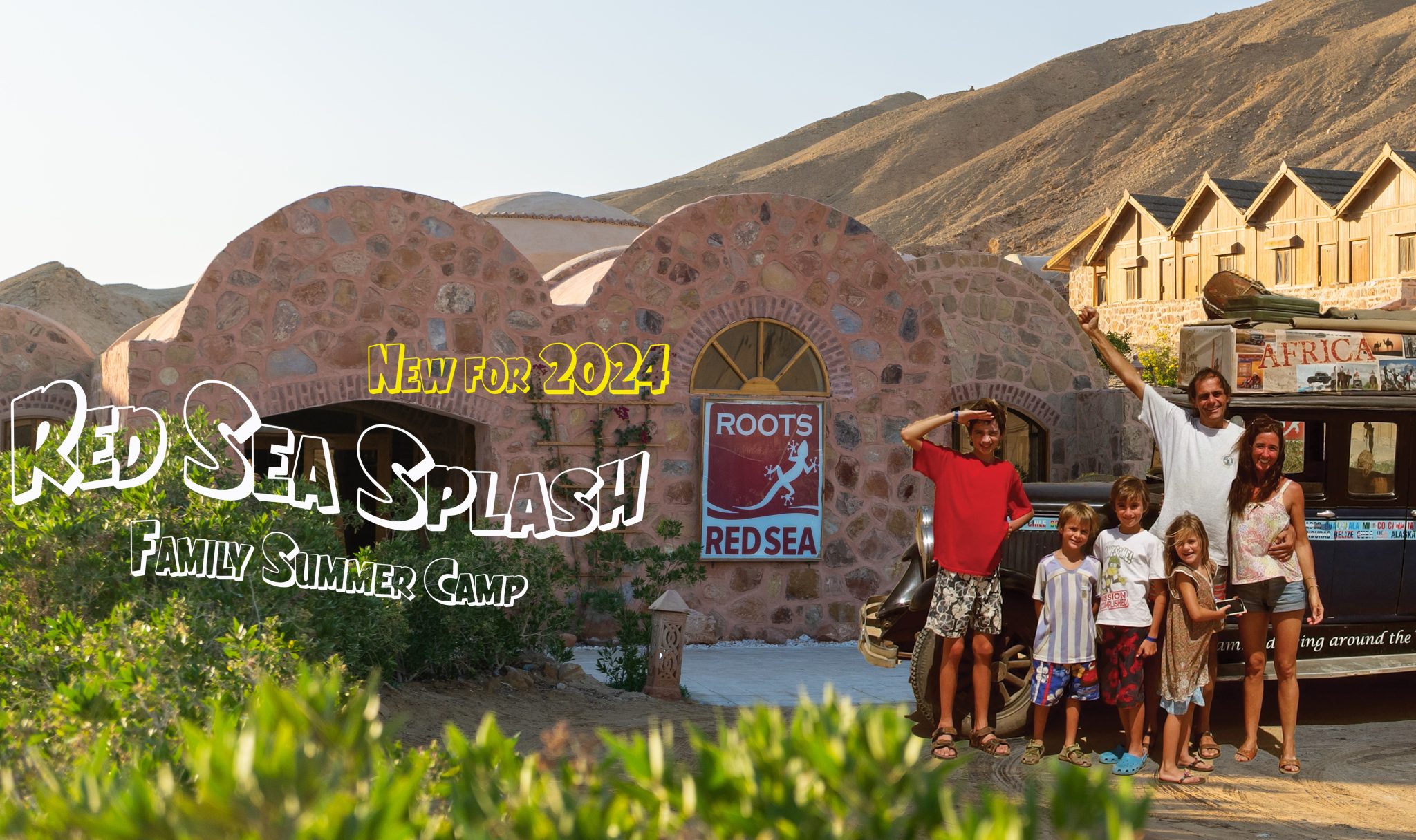
3rd AUGUST 2024 – 1 or 2 WEEK PROGRAMMES
Daily water programme with Snorkelling & Scuba Diving.
Beginners or qualified, something for all.
Leave the kids with the Splash Team for days of Excitement, Fun & Adventure!

BOOK NOW: INFO@PHARAOHDIVECLUB.COM / TEL: +44 7598 329059 or +20 100 6822000
There are various options for accommodation with options for 2, 3, 4 or 5 guests.
Eco Huts provide accommodation for families of up to 4. The best option to enhance the adventure and closest to camping with basic facilities. For August we will provide central air cooling for all the Eco Huts.
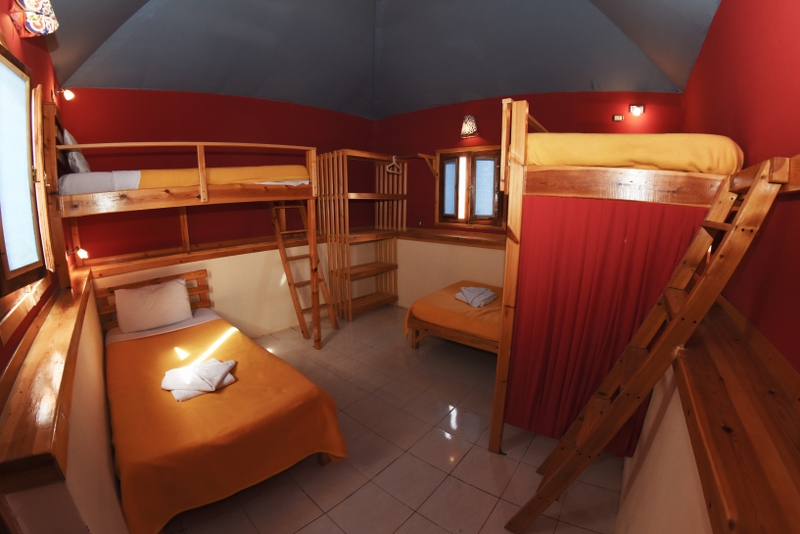
Deluxe Chalets are only suitable for 2 guests. Fully air conditioned rooms with private bathroom and other facilities.
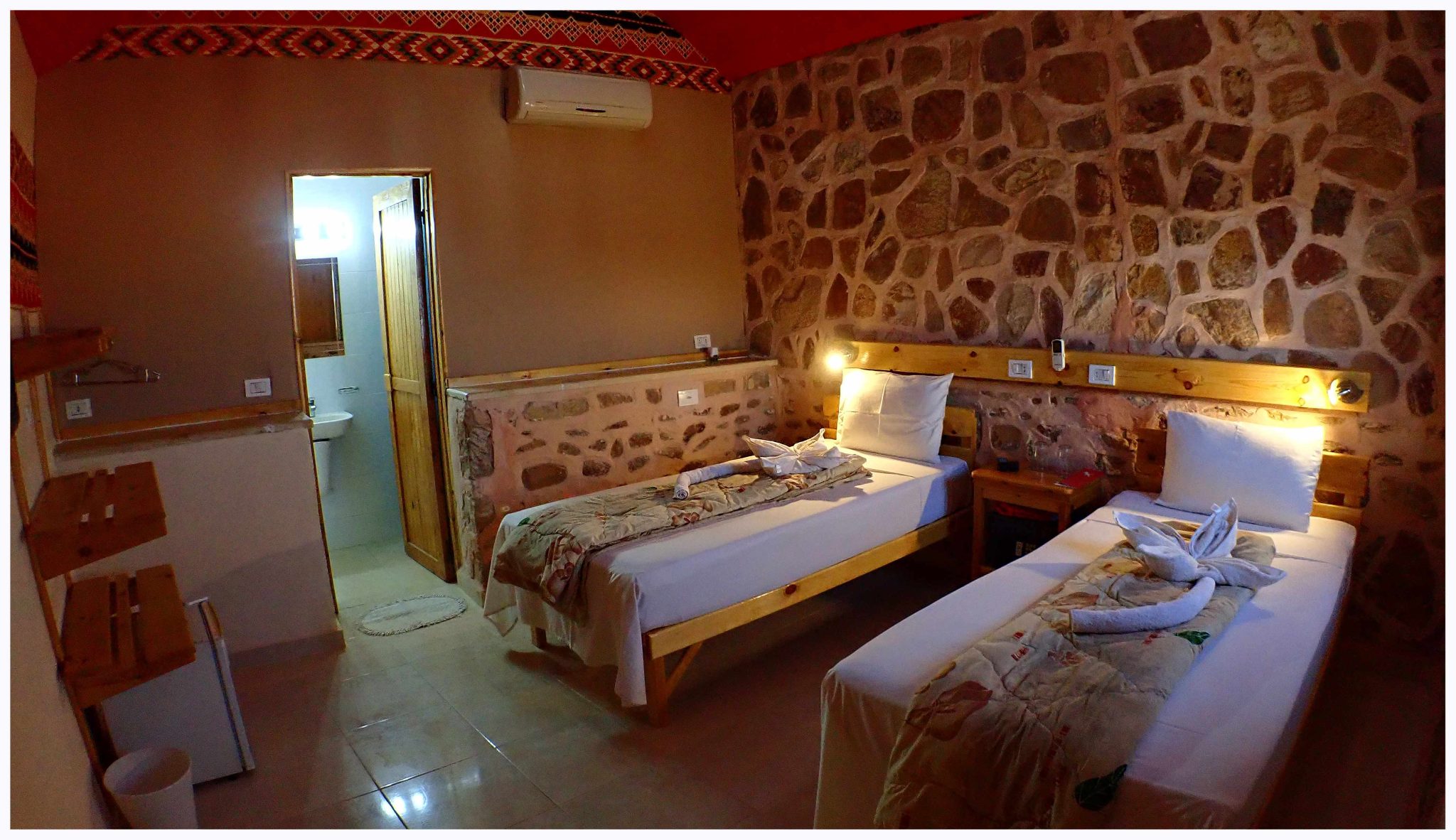
Boutique Rooms are available for families of up to 5.
Individual bespoke rooms fully air conditioned with private bathroom and other facilities.
Eco Huts: £675 per adult / £425 per child / Under 8 FREE of charge
Deluxe Chalet: £830 per adult / £505 per child / Under 8 FREE of charge
Boutique Room: £925 per adult / £550 per child / Under 8 FREE of charge
BOOK NOW: INFO@PHARAOHDIVECLUB.COM / TEL: +44 7598 329059 or +20 100 6822000
This is a truly unique opportunity to have a Family Desert Adventure totally away from it all! You will be based at the remote Roots Red Sea on the coast of the Egyptian Eastern Desert, 140km south of Hurghada city.

Red Sea Splash main focus is Snorkelling & Scuba Diving but that’s not all, we provide a rounded week of activities in support.
Pool& Field Games – Arts & Crafts
Marine Biology Workshops
Cultural Activities – Orienteering Adventures
Roots Red Sea have established strong links with the local communities of Hamerwain & El Quseir affording our guests to have a true taste of the local culture, SPLASH CAMP embraces this opportunity and bring in the local children to join in the fun with our adventure seekers.

During the day, families are welcome to take part in all activities together or the kids can be left with the SPLASH CAMP team while the parents enjoy the facilities or go diving themselves!
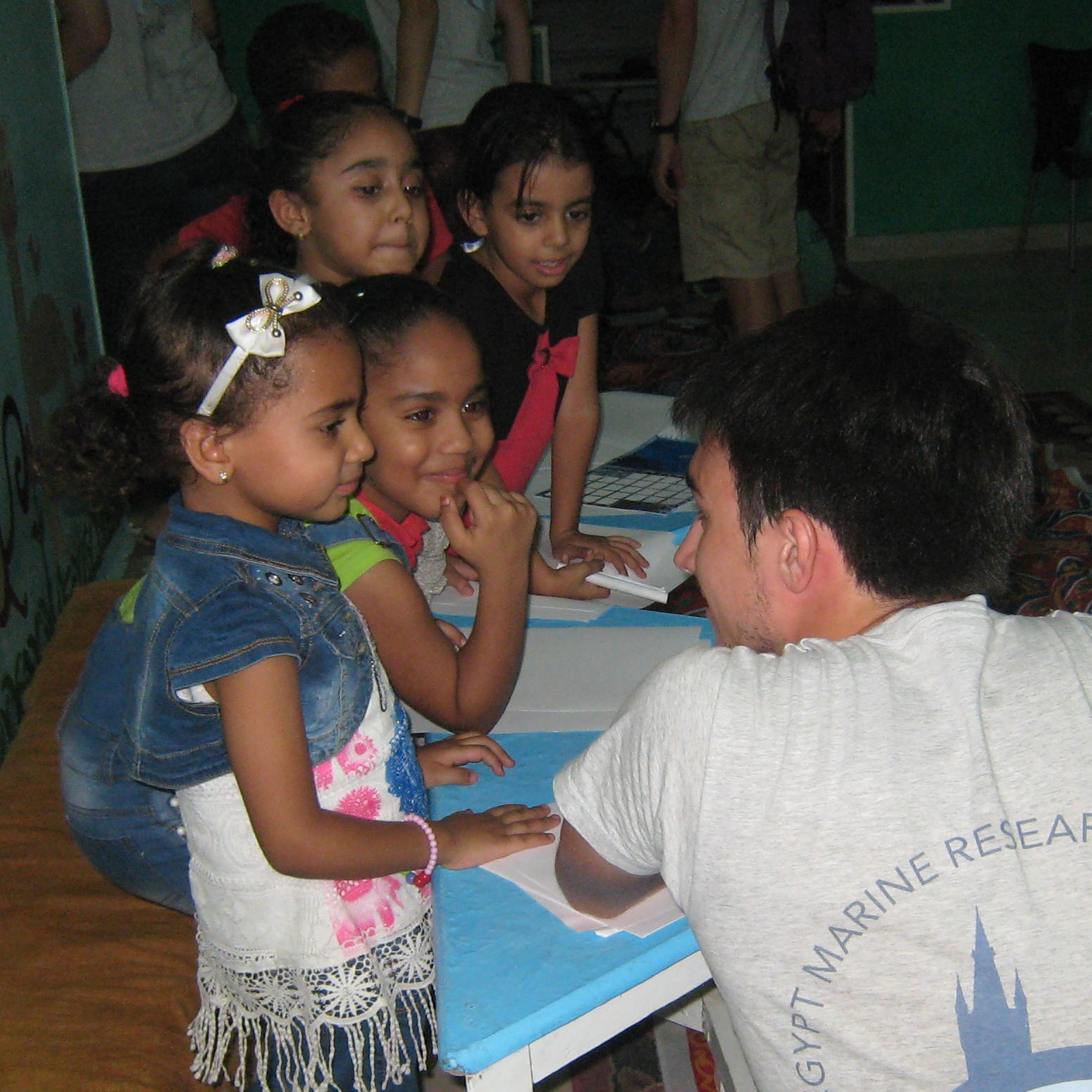
At the end of the day, its family time while the SPLASH CAMP team take a break. For those with the energy, there are family evening activities planned a few evenings.
Open Air Movie Night – Desert Star Gazing Walk & Talk
El Quseir Evening City Tour
The second week is very special, we head off on the Big Blue for a liveaboard safari around Fury Shoals.

BOOK NOW: INFO@PHARAOHDIVECLUB.COM / TEL: +44 7598 329059 or +20 100 6822000
U-8 Splash Club
Sadly we can’t offer Scuba Diving to the Splash Club but we can have lots of fun Snorkelling & Free Diving!
Splash Club includes:
Certified Snorkel Course – Marine ID Games – Intro to Free Diving
Arts & Craft Sessions – Adventure trails – Cultural Playtime – Pool Games

U-12 Explorer Club
In addition to an exciting snorkelling and Free Diving Programme in the Splash Club we can take you under the water on SCUBA to a whole new world of fun and wonder. If you are under 10 your first breath under water will be as a Bubblemaker and continue with daily Seal Team Missions. From 10 we will complete a Discover Scuba Diving experience in the amazing Red Sea. Alternatively we offer a full junior certification programme to become an international qualified Scuba Diver.

U-16 Adventurer Club
For qualified Scuba Divers regardless of age it’s the Adventurer Club and exploration of the local reefs and marine life. There will be 2 dives every day with the Open Ocean marine field station team who will introduce you to Red Sea marine life and workshops on marine research. Alternatively there are opportunities to continue your scuba diving certifications with our instructional team.

Parents are welcome to join the club activities and join the courses.
BOOK NOW: INFO@PHARAOHDIVECLUB.COM / TEL: +44 7598 329059 or +20 100 6822000
Big Blue might seem like the new kid on the block, but the team behind the highly acclaimed liveaboard is far from that. They have been running Red Sea safaris since the late 1980’s and were in fact part of the early pioneers who ventured out to the unknown on vessels that in today’s world, really shouldn’t have left the harbour! It’s that experience and the years of operating the award-winning Roots Red Sea resort which truly set Big Blue apart from the crowd!
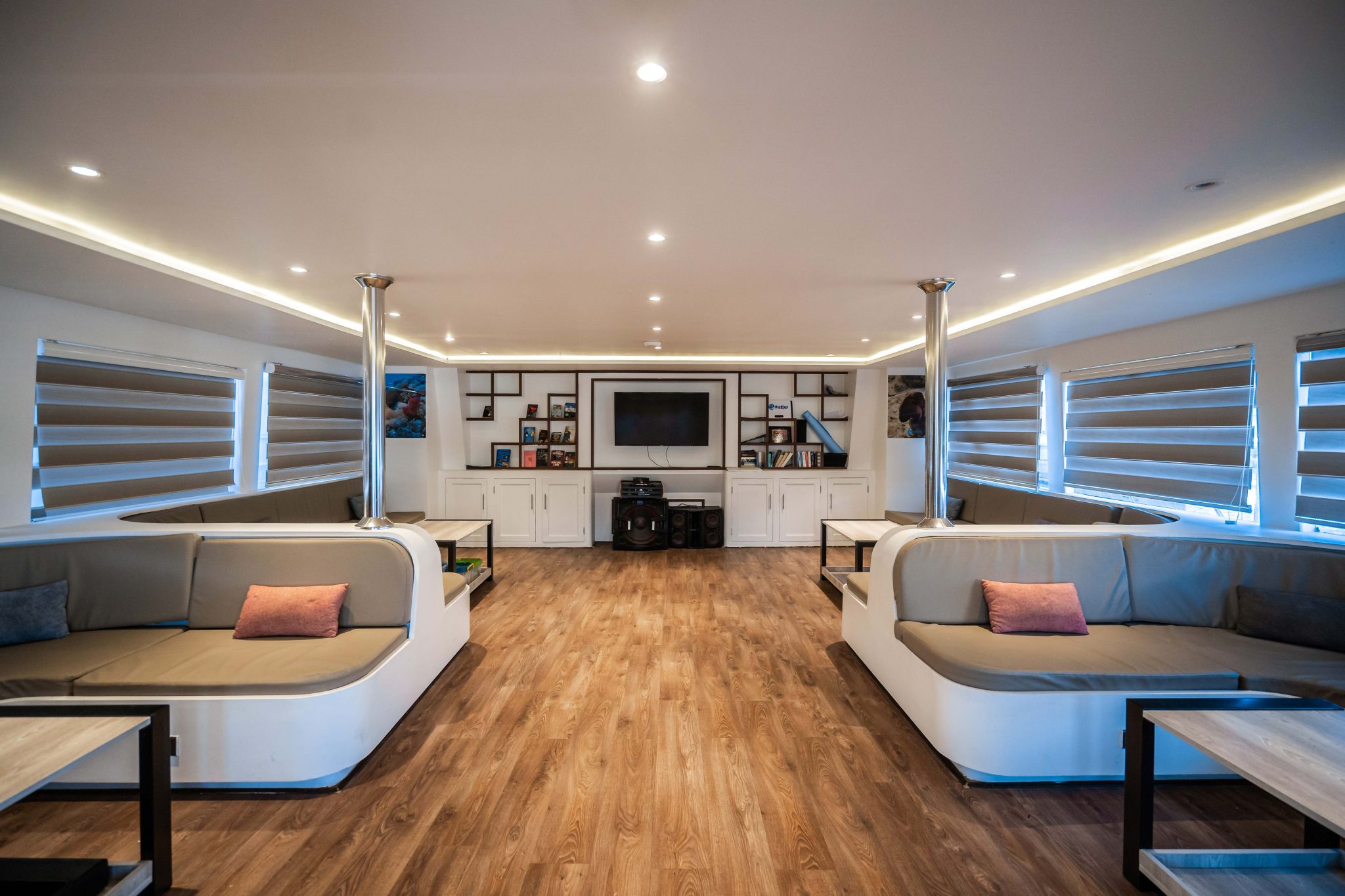
Large lounge area, spacious sun deck and terrace deck.

Airy restaurant with five tables with up to six chairs per table, serving a varied and delicious menu with special dietary requirements catered for.

The spacious cabins have side by side beds and a large walk in wet bathroom.
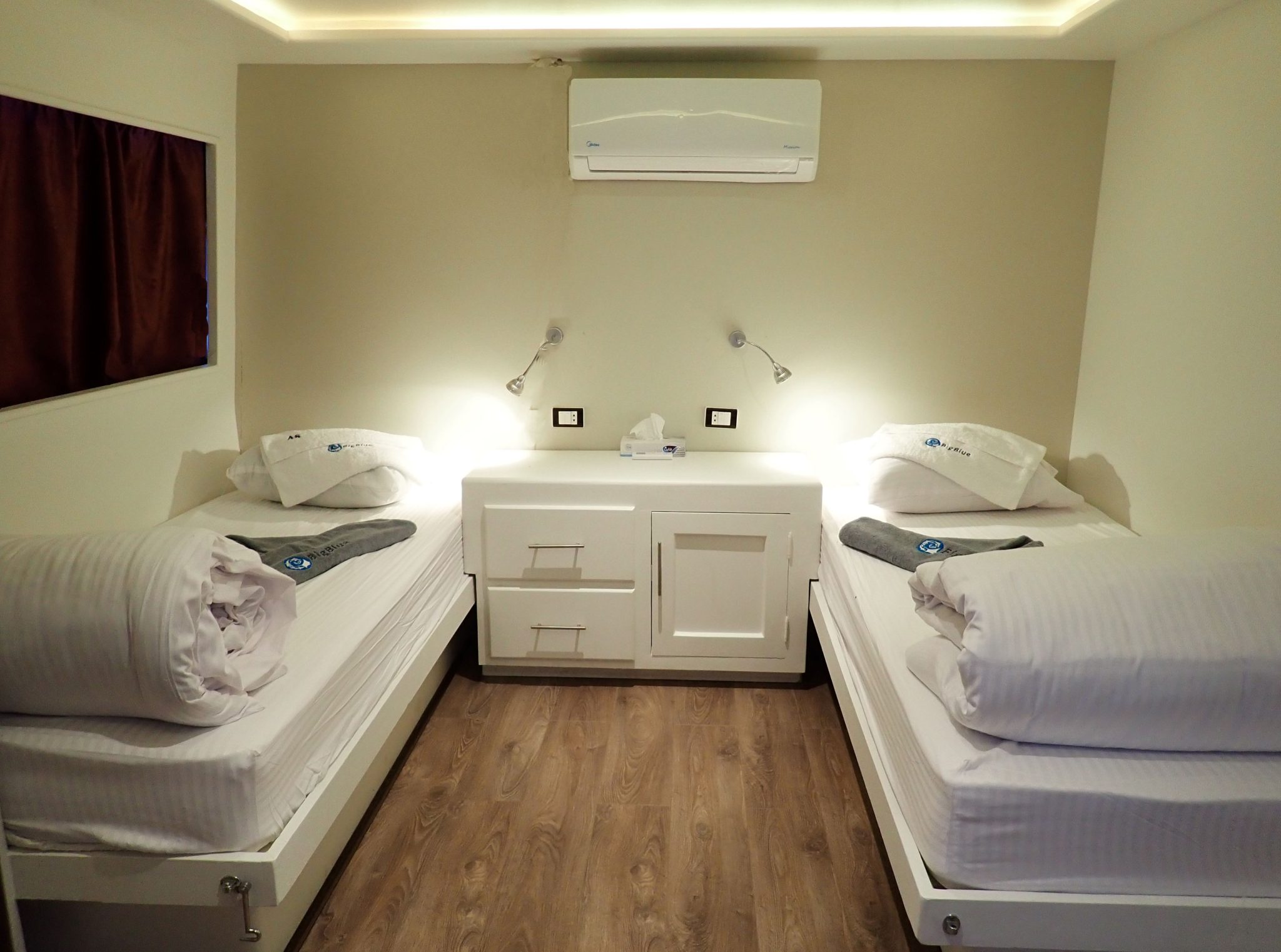
Ample dive deck for divers & snorkelers.
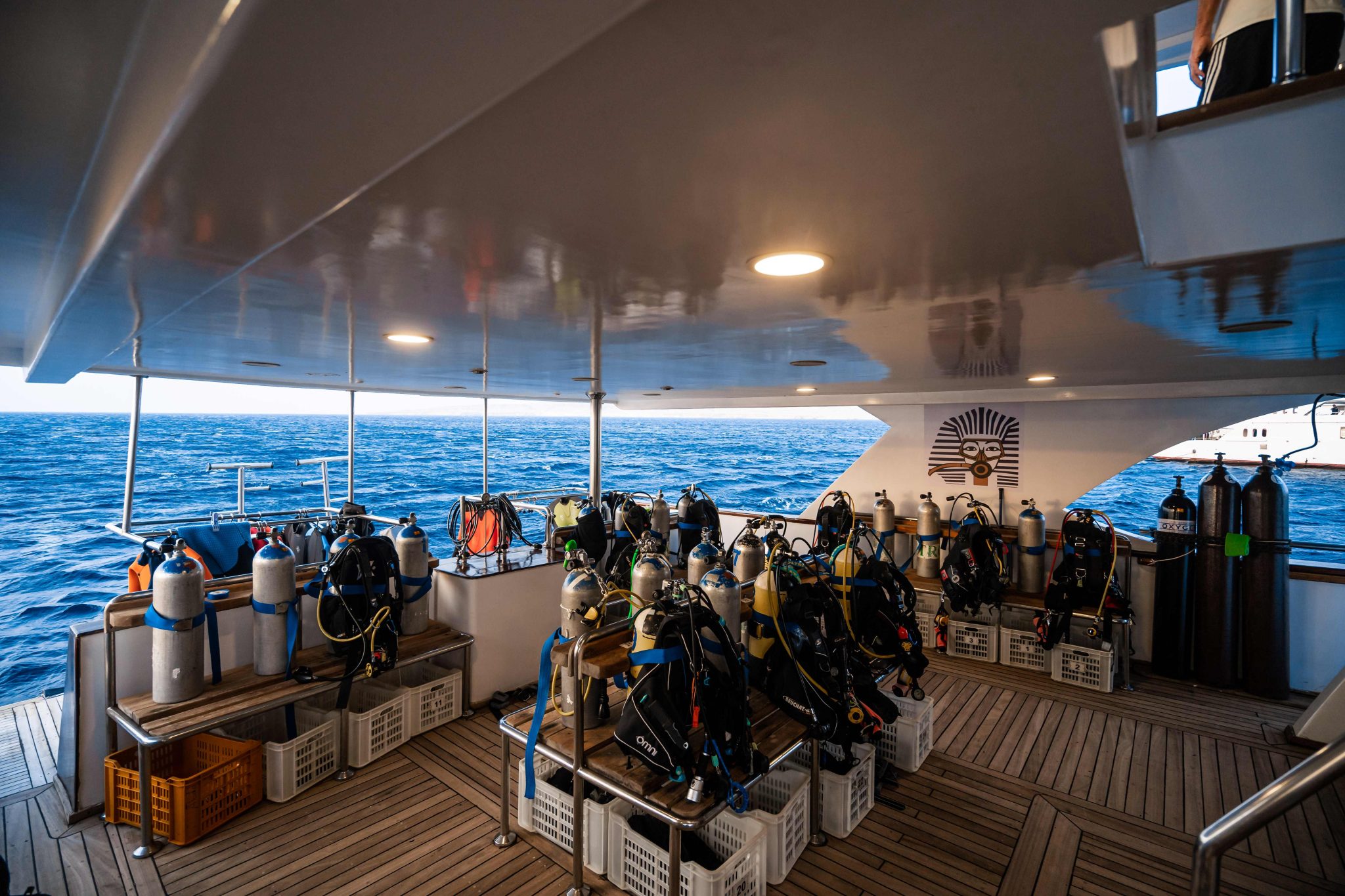
Safety is everyone’s priority, whether you are relaxing on board, swimming, snorkelling or diving.
On board Big Blue is fitted with smoke alarms, emergency lighting and a fire alarm system. The lower corridor has a full-size door fire exit at the bow and open stairs to the stern. There are evacuation plans in each room along with life jackets, glass breaker tool and a fire extinguisher.
BOOK NOW: INFO@PHARAOHDIVECLUB.COM / TEL: +44 7598 329059 or +20 100 6822000
Red Sea Splash at Fury Shoals is a very rare opportunity to get involved with marine biology expedition for children and adults. Open Ocean biologists are on board to provide fascinating and entertaining facts about the marine life you will see. The team will provide workshops on marine life identification and survey methods both of which, should you wish, you will have the chance to put into practice during your safari.

The week is open to snorkelers, scuba divers and non divers too!
Fury shoals is perfect for first time mariners as it offers plenty of protection from the weather.
We board at Port Ghaleb on Saturday evening and prepare to set sail early on Sunday morning.
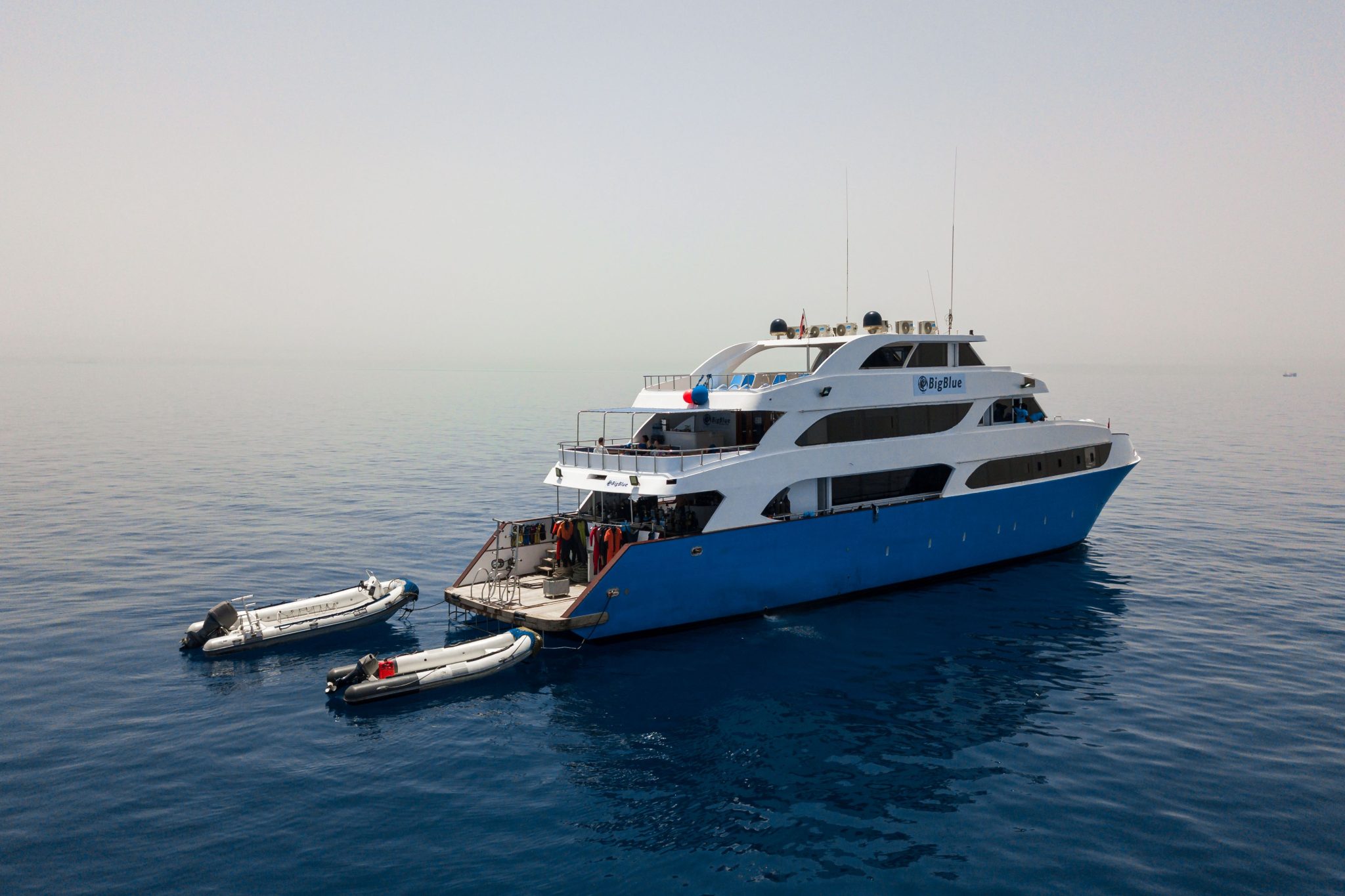
Heading south, our first day will be diving the reefs of Abu Dabbab before sailing overnight to reach our ultimate destination the Fury Shoals.
Here we will spend four days swimming, snorkelling and scuba diving amazing reefs. This includes guaranteed DOLPHIN encounters at Sataya Reef! After the last dive we haul anchor and head back to Abu Dabbab for our final two dives before disembarking our boat BIG BLUE.

Camp Extension Cost*
Adult £650 per adult
Under 16 £350 per child
BOOK NOW: INFO@PHARAOHDIVECLUB.COM / TEL: +44 7598 329059 or +20 100 6822000
FURTHER INFORMATION – INFO@PHARAOHDIVECLUB.COM
TEL: +44 7598 329059 or +20 100 6822000
Blogs
Meet Pure Dive Resort: Your Gateway to Unforgettable Diving in Bali, Indonesia

If you’re passionate about the underwater world, listen up! We’ve got an incredible opportunity for you to experience the vibrant reefs and majestic marine life of Nusa Penida, Bali, Indonesia.

info@purediveresort.com / +62 811 3999852 / www.purediveresort.com
Pure Dive Resort isn’t just another dive centre; it’s a team of experts dedicated to providing world-class scuba diving and freediving adventures around Nusa Penida, Lembongan, Ceningan, and even Bali.

info@purediveresort.com / +62 811 3999852 / www.purediveresort.com
Whether you’re a seasoned diver or completely new to the sport, Pure Dive Resort has something for you:
For certified Divers: Discover stunning dive sites, encounter manta rays, seasonal mola-mola (sunfish), and a dazzling array of marine life.
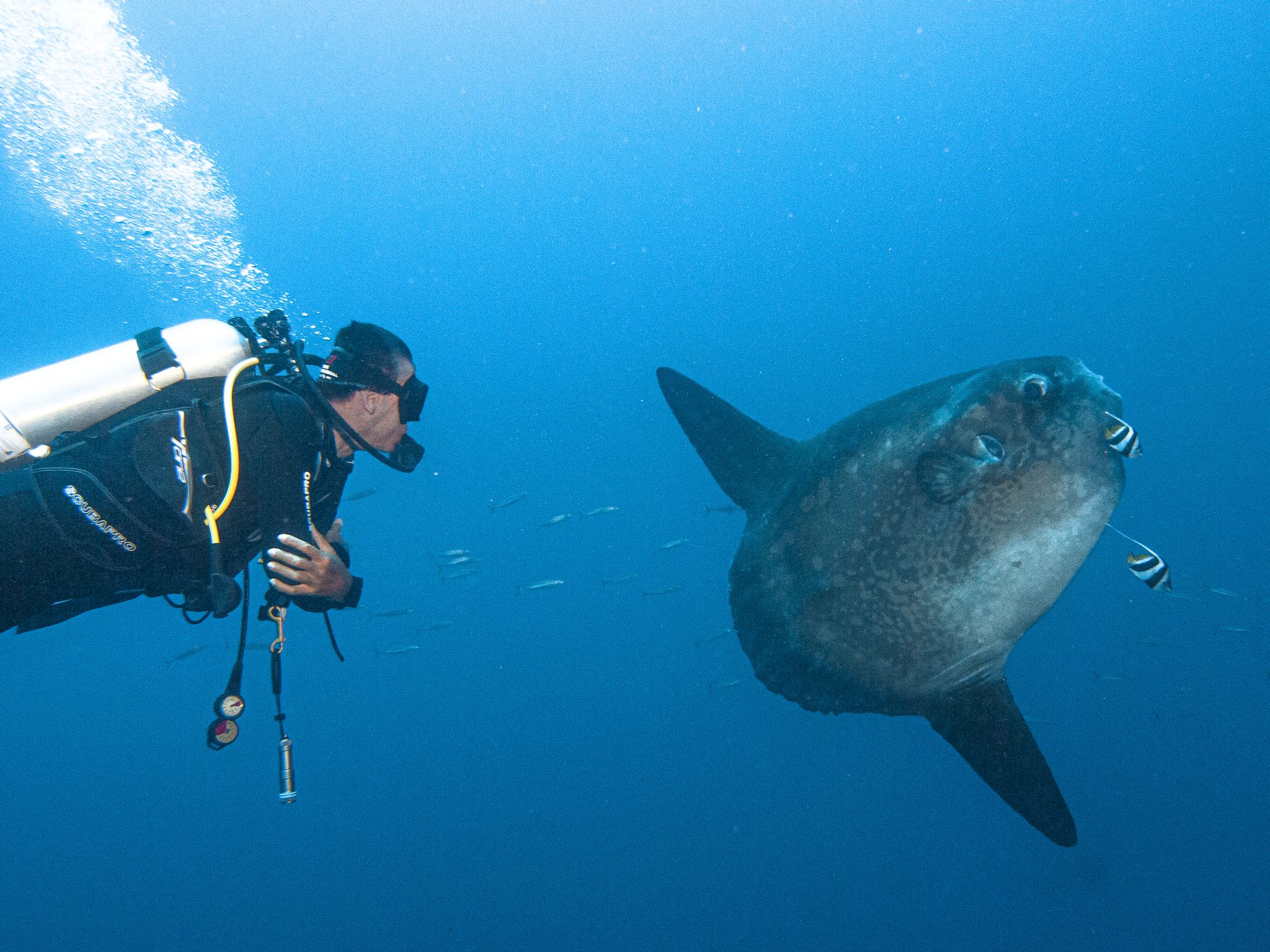
For beginners: Embark on your scuba journey with beginner programs like Try Scuba and Basic Diver, Open Water and Advanced certifications.

Freedivers: Explore the depths on a single breath with guided freediving experiences and courses.

Exclusive Scubaverse Offer: Save on Your Next Adventure
As a valued Scubaverse follower, you get an exclusive 10% discount on any Dive & Stay or Learn & Stay package booked at Pure Dive Resort for 2024. Dive into the crystal-clear waters, explore breath-taking reefs, and create unforgettable memories in this diver’s paradise.
Visit https://www.purediveresort.com/package-offers/ to explore amazing packages and claim your discount with the code: SCUBAVERSE10
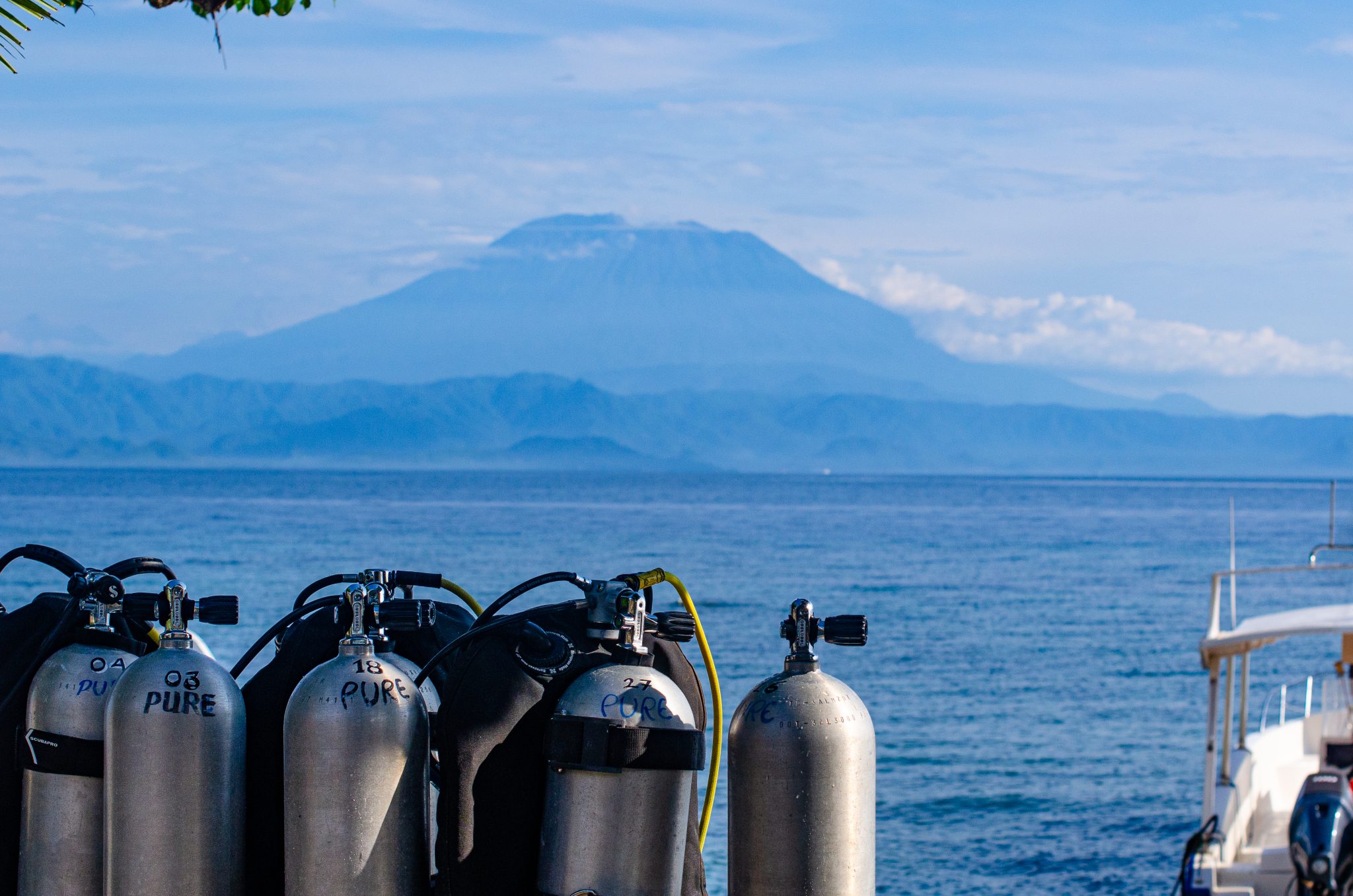
info@purediveresort.com / +62 811 3999852 / www.purediveresort.com
Ready to make a splash?
See you in Nusa Penida!
-

 News3 months ago
News3 months agoHone your underwater photography skills with Alphamarine Photography at Red Sea Diving Safari in March
-

 News2 months ago
News2 months agoCapturing Critters in Lembeh Underwater Photography Workshop 2024: Event Roundup
-

 Marine Life & Conservation Blogs2 months ago
Marine Life & Conservation Blogs2 months agoCreature Feature: Swell Sharks
-

 Blogs1 month ago
Blogs1 month agoMurex Resorts: Passport to Paradise!
-

 Blogs2 months ago
Blogs2 months agoDiver Discovering Whale Skeletons Beneath Ice Judged World’s Best Underwater Photograph
-

 Gear News3 months ago
Gear News3 months agoBare X-Mission Drysuit: Ideal for Both Technical and Recreational Divers
-

 Gear Reviews2 months ago
Gear Reviews2 months agoGear Review: Oceanic+ Dive Housing for iPhone
-

 Marine Life & Conservation2 months ago
Marine Life & Conservation2 months agoSave the Manatee Club launches brand new webcams at Silver Springs State Park, Florida


